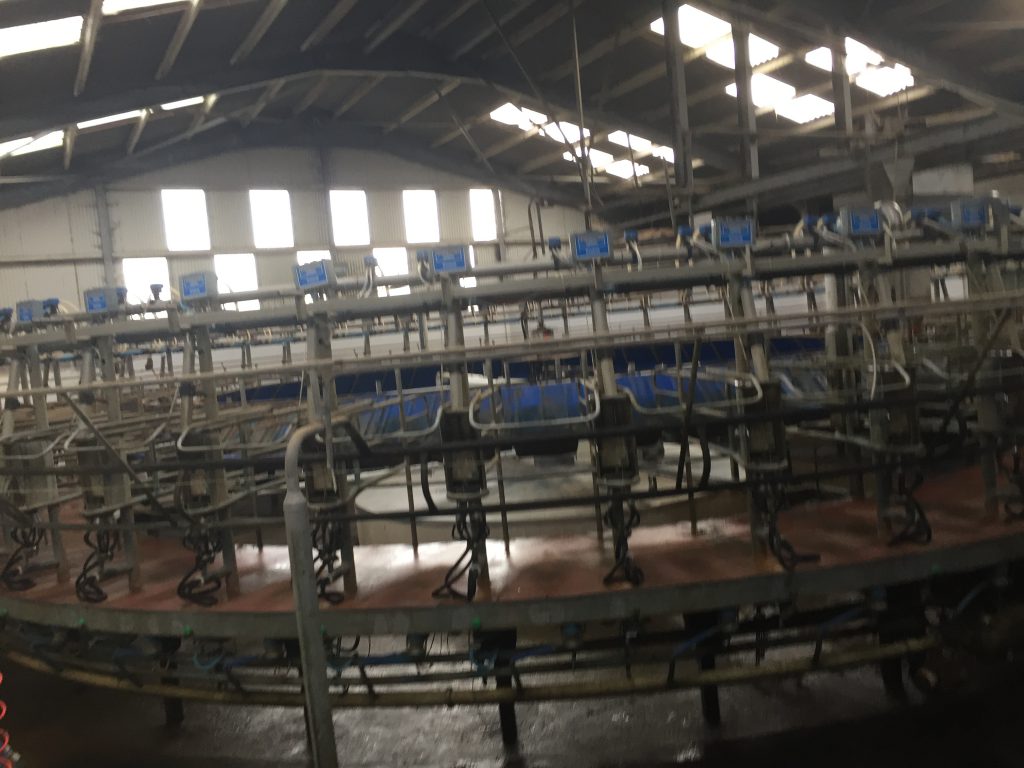The Cooperhill herd in Co. Limerick consists of approximately 300 ‘liquid milk’ type Holstein Friesian cows.
But, over the next four years, the farm’s manager John Holton has ambitious plans to change the production system, with Jersey genetics becoming a major part of the business.
As part of Macra na Feirme’s National Rally, over 100 Macra members visited the farm to see exactly what changes will be made between now and 2020.
Holton, who has been at the helm of operations at the Irish Cement owned farm since 2006, explained the reasoning behind making the switch to cross-breeding.
Reasons behind making the switch
The Farm Manager explained that the dairy enterprise was established on the farm in the 1938, and over the years a substantial liquid milk contract had been built up.
But when Glanbia took over Kerry Group’s milk contracts in the area, the farm was essential forced away from liquid to manufacturing milk production.
And, Holton felt that the 8,000-10,000L liquid milk type Holstein cows were not suitable for a spring-calving grass-based production system.
He identified two key issues with this type of cow from a manufacturing milk point of view – these were poor fertility and low milk solids production.
The cows on the farm would be a traditional liquid milk cow capable of producing 8,000-10,000L of milk, but the milk solids were low. “The cows were producing a good yield but the lower milk solids were not going to pay. “Fertility traditionally would have been a problem within the herd, but split calving (66% spring, 33% winter) masked that and the calving interval on the farm was 392 last year,” he said.
Holton also said he assessed the various breeding options available before coming to the conclusion that cross-breeding was the way forward for the Cooperhill herd.
Before choosing the cross-breeding route, he had looked at Friesian and Norwegian genetics, but he felt that a Jersey crossed on his cows would be the ideal solution.
He also mentioned that he considered selling out the entire herd of cows and replacing them with a more grass-based animal, but he felt the bio-security risk was too great.
I looked at a lot of systems and I wanted a cow that was capable of producing 500kg of milk solids. “I think Jersey will be an ideal cross on the type of cow currently in the herd and this spring 90% of the cows in the herd were AI’d to grass-type Jersey bulls,” he said. Along with changing the type of cow, Holton also plans to increase the number of cows on the farm to 500 by 2020.
This will see the number of cows passing through the farm’s 50 unit rotary parlour increase by almost 66% in the coming years.
To ensure that the farm is adequately equipped to handle this number of cows, he said that a lot of work has gone into improving the farms housing and grazing infrastructure.
And in recent years, an additional 7km of roadways have been developed on farm to make managing a spring-calving grass-based herd as easy as possible.
An increased focus has also been placed on grassland management, and Holton told the delegates of his plans to increase the amount of grass utilised in the cows diets.
To achieve this level of production, Holton admitted that reseeding and monitoring soil Phosphorous and Potassium and grass growth levels have become a key component of the business.
“We started measuring grass three years ago. The benefits are huge. It allows you to see what paddocks need to be reseeded,” he said.
To deal with the extra numbers all of the machinery work on the farm will be contracted out, while the four people currently employed on the farm will look after the cows and calves.
Video: Cooperhill Herd cows grazing
Assessing the options before switching to cross-breeding
Cross-breeding not the only major change on farm




